Cleaning the washing machine with folk remedies
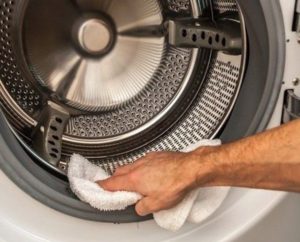 In order for the washing machine to function properly and wash things efficiently, it must be constantly monitored. We are talking not only about timely repairs and compliance with operating rules, but also about regular cleaning. You need to clean the machine from scale and mold, and do this every six months. You can clean your washing machine using home remedies without causing any damage. Let’s take a closer look at what to take and in what proportion.
In order for the washing machine to function properly and wash things efficiently, it must be constantly monitored. We are talking not only about timely repairs and compliance with operating rules, but also about regular cleaning. You need to clean the machine from scale and mold, and do this every six months. You can clean your washing machine using home remedies without causing any damage. Let’s take a closer look at what to take and in what proportion.
Sodium bicarbonate
Sodium bicarbonate is regular baking soda. This powder has long established itself as an excellent cleaner for kitchen surfaces, sinks, kettles, tile joints and microwave ovens. It can also be used to safely and effectively remove lime deposits in an automatic machine.
Cleaning the washer with baking soda is easy. If you need to wash the inside of the machine, just do the following:
- divide 0.5 kg of soda into two piles of 250 g each;
- pour the first part into the compartment of the main wash tray;
- the remaining half - into the drum;
- turn off spin;
- turn on double rinse;
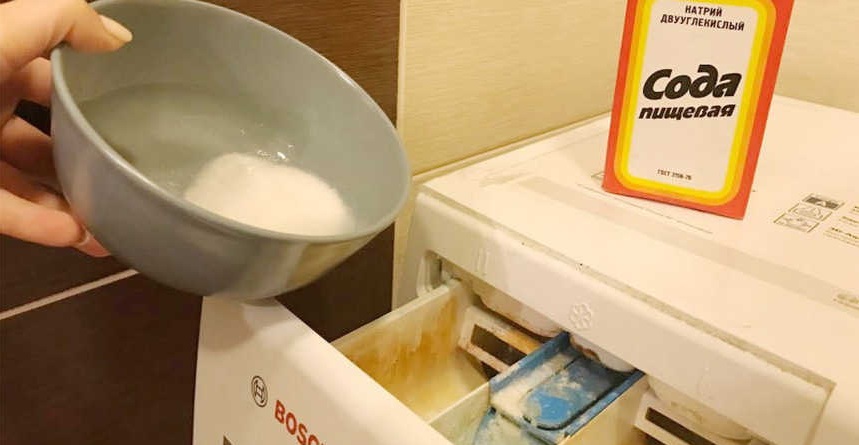
- select fast mode and set the heating temperature to maximum.
For one-time cleaning of an automatic washing machine, you will need 500 g of soda.
One cycle with soda will not only remove plaque and dirt from the surface of the drum and pipes, but will also clean the heater of scale. The latter is especially important, since hard tap water leaves lime deposits on the heating element, which build up on the metal and lead to overheating of the element. Sodium bicarbonate can dissolve fossils and prevent breakage.
It is easy to bleach the outer body of the machine with soda. Mix 100 g of powder with a liter of water and dish gel, apply the resulting mixture to the contaminated areas and rub them until they shine. Afterwards, wash off the foam with water and wipe dry with a rag. Otherwise, dirty smudges will remain on the machine.
Limonka
Another effective folk remedy against scale and putrid odor is citric acid. It is stronger than soda and vinegar, dissolving even strongly baked lime. Ideally, the “lemon” is supplemented with a portion of sodium bicarbonate for a more comprehensive cleansing.
Take 250 g of citric acid and 100 g of soda. The first ingredient can be replaced with freshly squeezed citrus juice without dyes or preservatives.
- We run a high-temperature mode on the machine (for example, “Cotton 90”).
- We wait until the drum is filled with water.
- As soon as a click is heard, signaling the end of the water supply, we set it to “Pause”.
- Open the detergent tray and pour the lemon and soda into the main wash compartment.
- Let's take a break.
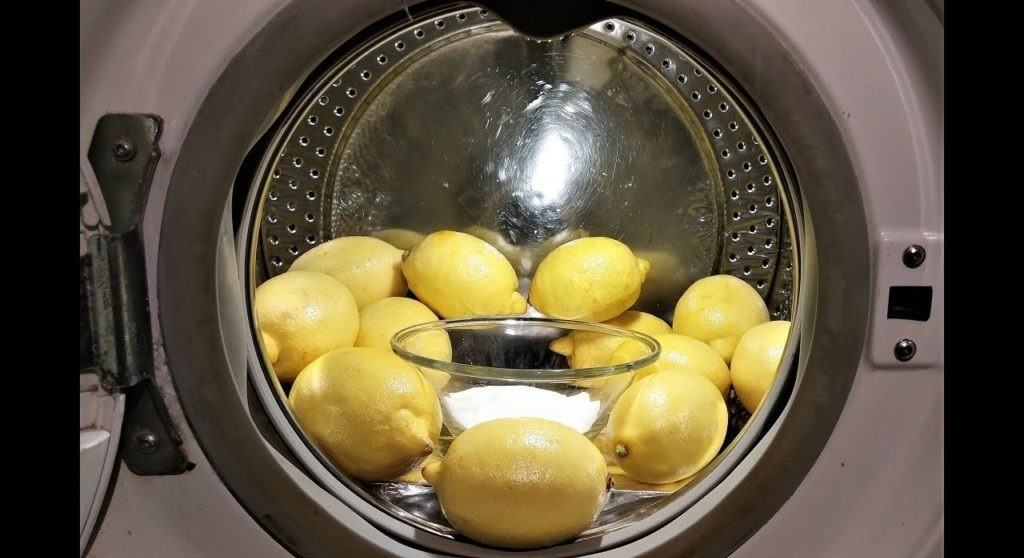
- We mark 15 minutes, after which we pause the cycle again.
- Leave the equipment full of water and product for 1-1.5 hours (at this time, lemon and soda will actively work, dissolving scale).
- We continue the cycle.
- When you start rinsing, pour a portion of lemon juice mixed with vinegar into the central compartment of the powder receptacle (dedicated to liquid emollients).
- We are waiting for the end of the cycle.
The amount of lemon poured into the tray depends on the capacity of the machine: if 3-4 kg - 150-200 g, if more than 5 kg - 250 g.
A one-time cycle with lemon juice will relieve the machine from most of the “pains” - plaque, scale, fungus and small debris.Limescale deposits will come off the surfaces on their own, but it is better to check the rubber seal and the tank after washing - fossilized pieces may remain in holes and folds. At the same time, wipe the washer dry.
Cleaning with vinegar essence
The washing machine can be effectively cleaned at home using acetic acid. Vinegar is an excellent disinfectant while remaining very cheap and relatively safe. The essence is especially good at eliminating mold, and to remove unpleasant odors, it is recommended to supplement it with sodium bicarbonate.
Vinegar and soda perfectly complement each other, ensuring complete cleansing of the washing machine from all “dirty misfortunes”. You will need half a glass of powder and essence. The latter must be diluted to a concentration of 7-9%. We proceed like this:
- select a program with water heating up to 90 degrees (“Cotton”, “Intensive”, “Children’s” are perfect);
- pour vinegar into the powder receptacle, into the main wash compartment;
- add soda to the central compartment allocated for air conditioning;
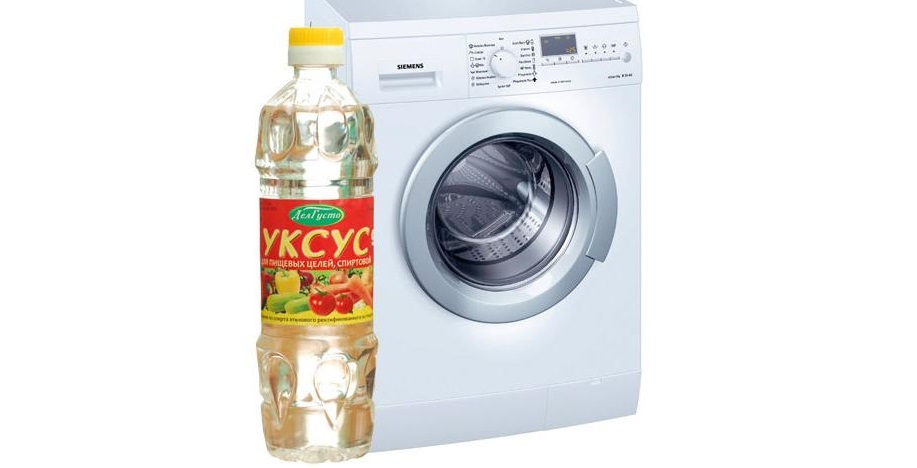
- set the spin intensity to maximum;
- start the cycle, wait 5 minutes and pause;
- leave folk remedies to “work” for 1-2 hours;
- pause the cycle and wait for the wash to finish;
- set to double rinse.
You cannot add 70% vinegar to the machine - you need to bring it to 7-9% concentration.
Already after the first run of the machine with vinegar, the result will be noticeable - the drum will be cleaner, the unpleasant smell and mold will go away. But it’s better to repeat the cycle several times to consolidate the result and wash off the chipped scale.
White
It is famous for its antibacterial properties and whiteness.It is often added when sanitizing premises and bleaching clothes, but the liquid is often used to clean washing equipment. The main thing when handling bleach is to take into account three important nuances:
- the liquid works only in cool water, and when heated above 40 degrees it loses its effectiveness;
- chlorine will not dissolve lime, but kills fungus;
- When pouring whiteness, gloves are required.
Whiteness in water heated above 40 degrees loses its antibacterial properties.
On average, to clean a washing machine with your own hands, you will need about 250 ml of chlorine bleach. It is necessary to empty the drum of laundry, turn on the “cold” program (with water heating to 40 degrees), wait until the end of the set and add whiteness to the powder receptacle. Then give the machine a minute and pause the cycle. We wait five minutes and restore the mode.
The whiteness will quickly remove dirt and disinfect the washing machine. The main thing is to wash “dry”, since getting bleach on clothes will lead to discoloration of the latter. This cleaning can be repeated no more than once every six months.
Perhydrol
Perhydrol is the pharmacy name for hydrogen peroxide. This liquid is also used by housewives as a folk remedy with a whitening effect. It is sold in bottles with a concentration of 3% and is excellent for removing scale, mold and other contaminants in the machine.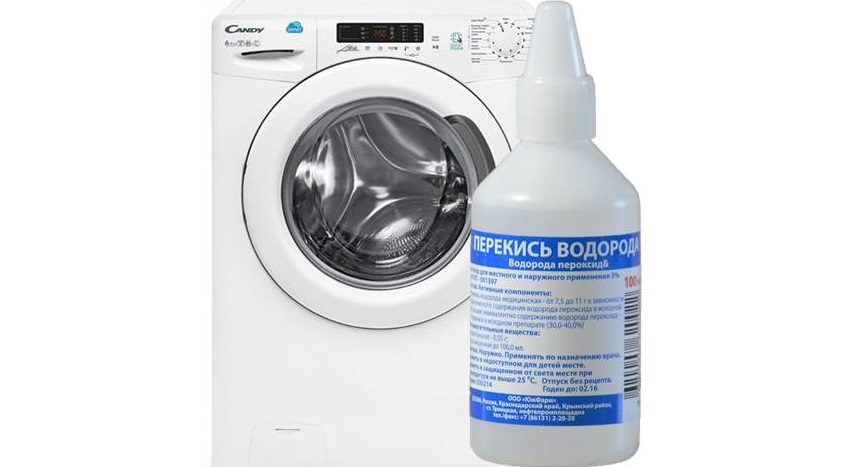
Unlike bleach, peroxide is absolutely safe: it does not leave toxic fumes or sediment harmful to humans, and decomposes completely in oxygen and water. But there is also a significant drawback of the drug - it will take a lot of time for an effective result. As a rule, it takes at least 3 hours to remove medium-intensity contamination. For frontal machines, the hours allocated for the procedure are doubled, as a repeat cycle is required.
Peroxide is an absolutely safe cleaner: it does not emit toxic fumes and gently cleans the washing machine.
The cleaning procedure itself is as follows:
- pour perhydrol into a spray bottle (no need to dilute with water, maximum concentration is needed);
- spray the product generously onto the internal surfaces of the machine, cuff, drum;
- close the drum and leave for 10 minutes;
- clean contaminated areas with baking soda;
- turn on a long cycle with water heating at 90 degrees;
- At the end of the program, set the rinse again.
Tablet peroxide is used with some differences. Add 10 tablets and 200 g of soda to the powder receptacle and immediately start the high-temperature cycle. It is important that the program lasts at least 2-3 hours, otherwise the perhydrol will not have time to “fight” dirt and mold.
Last resort method
If the machine has not been cleaned for several years in a row, the cuff is all covered with mold, and a musty smell is coming from the drum, then “heavy artillery” is needed. Thus, in advanced cases, the method with borax, soda, acetic acid and tea tree oil is effective. This mixture is very aggressive, so such cleaning is carried out no more than once every 12 months.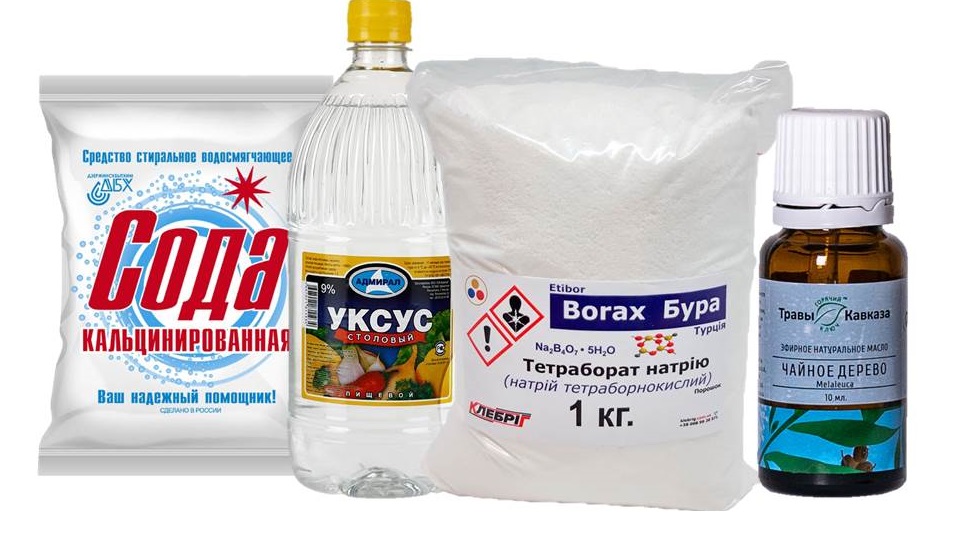
The cleaning scheme is not simple. The first step is to remove and clean the powder receptacle. The tray is placed in a solution of water and citric acid, soaked, and after the deposits have softened, the plaque is removed with a toothbrush. Afterwards the container is washed, dried and returned to its place. Next you need to do this:
- place soda and borax in the drum (natural oxygen bleach will also work instead of the latter);
- run a high temperature cycle with double rinse;
- at the end of the program, pour 2 cups of acetic acid and 20 drops of essential oil into the powder receptacle;
- repeat the rinse cycle.
You cannot unscrew the garbage filter immediately after the end of the high-temperature cycle - you can get burned by boiling water!
As soon as the cycle is over, you need to go over the powder receiver, body and drum with a dry cloth. We leave the hatch open so that moisture naturally evaporates from the internal parts of the washing machine.
How to properly care for your machine?
You can clean even a very neglected washing machine, but it is much nicer and easier not to let the machine fall into a deplorable state. Moreover, comprehensive cleaning with aggressive compounds is not necessary at all, if you remember a few basic rules. By following just 9 recommendations, you can avoid the appearance of fungus and plaque, maintaining high quality washing and reducing the likelihood of breakdowns. The following points are meant:
- after using the washing machine, wipe the folds of the hatch cuff dry;
- run at least one cycle monthly with water heating to 60-90 degrees;
- use special softeners for hard water, for example, “Calgon” (or its popular equivalent - soda);
- monitor the dosage of detergent, since if the norm is exceeded, the granules do not dissolve completely and stick to the surfaces of the machine;
- try to include an additional rinse to wash away the soap residue remaining after washing;
- Treat the hatch cuff weekly with a special anti-mold cleaner (alternatively, wash with vinegar or lemon solution);
- use high-quality detergents with natural and biodegradable composition;
- choose only powders and gels marked “for machine”, since hand washing products foam a lot and contaminate the washing machine);
- leave the hatch and tray open to ensure free air conditioning.
With your own hands, you can rid your washing machine of fungus and a caked-on layer of lime easily and cheaply. There is no need to buy expensive professional cleaners - ordinary soda, vinegar, peroxide and lemon juice will effectively remove dirt. The main thing is to act consistently and calculate the correct dosage.
Interesting:
Reader comments
- Share your opinion - leave a comment


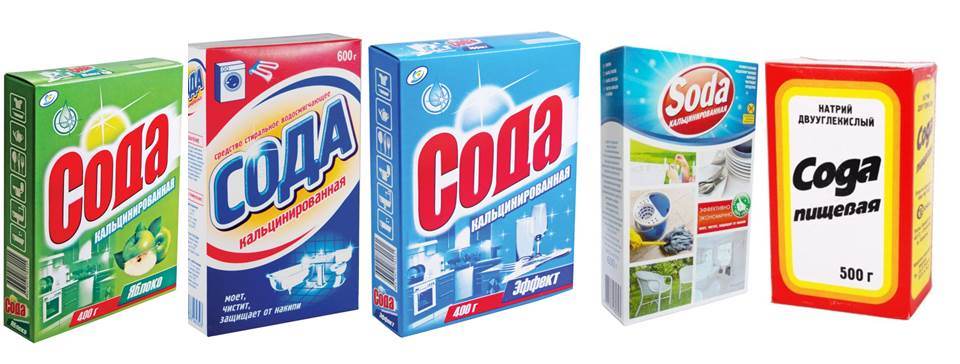



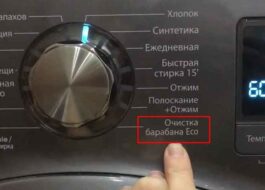














Add a comment